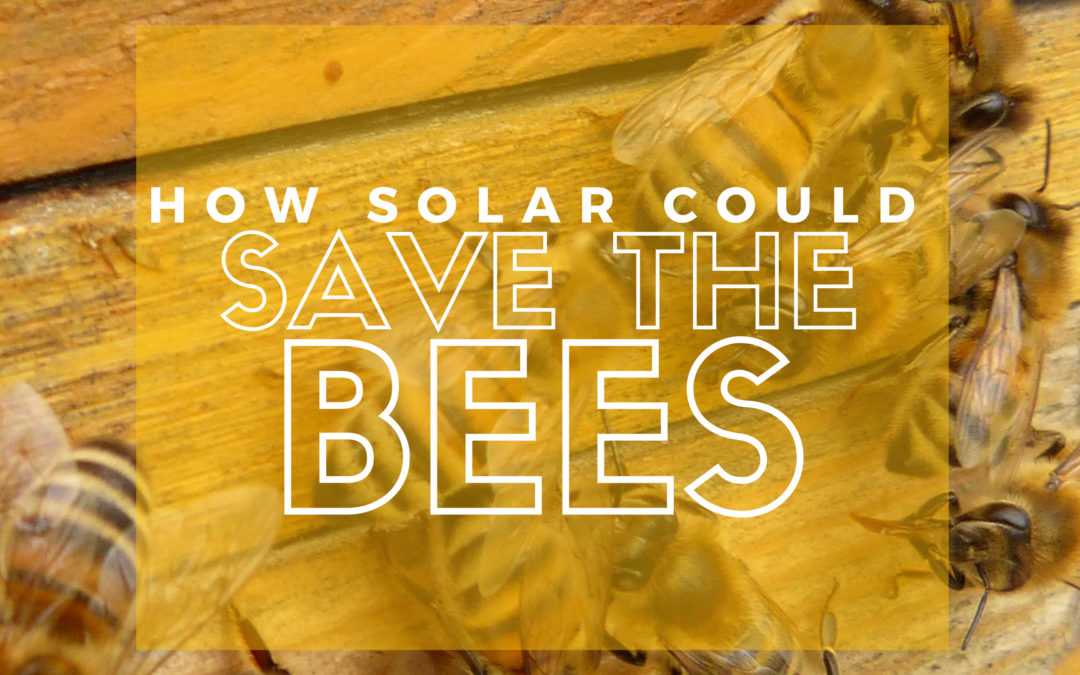Solar saves the bees? It’s likely you’ve heard of the gradual, likely devastating, decline in the worldwide bee population. In Washington, beekeepers are reporting losses at two to three times the level they have ever experienced (Washington State University).
Why is this important? We rely on bees to pollinate 71 of the 100 crops that provide 90% of most of the world’s food.
Major players of this decline include habitat loss and insecticides used in large-scale agriculture (Environment Washington).
How Can Solar Help Save Bees?
The answer might surprise you. Though replacing fossil fuels with solar energy is reducing climate change effects, the solution lies within solar farms themselves.
Greer Russell of the Argonne National Laboratory published an article about solar farms and their benefits on pollinator habitats.
According to Russell, researchers in Argonne’s Environmental Science (EVS) division have found that the area around solar panels could provide an ideal location for the plants that attract pollinators. Often filled with gravel or turf grass, this land otherwise goes unused. Research has shown that in some locations, these grounds offer a perfect place to establish native plant species, such as prairie grass or wildflowers, which are prevalent pollinator habitats, in hopes of encouraging steady population growth.
These areas are already dedicated to solar production, not for large-scale agriculture. Because these plants are native species that flourish on their own, there is no need for insecticide use.
Win-Win For Solar, Bees And Agriculture
Growing pollinator habitat around solar sites will also help improve the sustainability of solar energy development in agricultural regions. By increasing the ability of pollinators to pollinate adjacent agricultural fields, solar-sited pollinator habitat may boost farmer’s crop yields and make solar farms a more welcome neighbor to agricultural farms.
This sustainable land use could prove an asset to 3,500 square kilometers of agricultural land near Utility-Scale Solar Energy facilities.
Other Benefits To Bees
- Solar-sited pollinator habitat means more efficient land use on solar farms
- Solar-sited pollinator habitat won’t affect solar panel efficiency
- The pollinator population could be at least partially restored with few side effects
- Combining land use could lower facility maintenance costs, making up for costly overhead expenses
Some states, like Illinois, Maryland and Minnesota, are in the process of adopting pollinator-friendly landscape bills. With our own Carbon Fee Initiative (I-1631) headed to the ballot, could Washington be next?
Visit Greer Russell’s full article about bees and solar energy.

